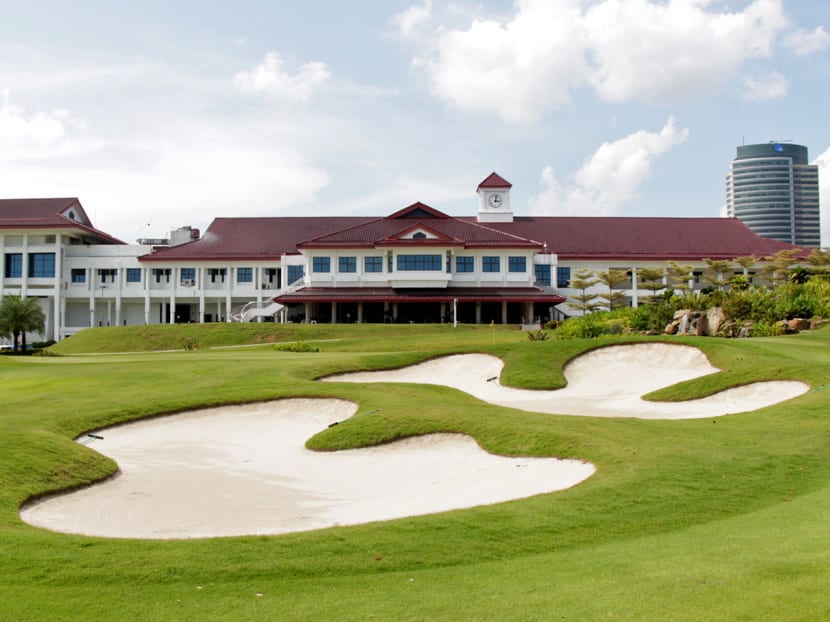Soft soil conditions at terminus site ‘could prove a challenge’
SINGAPORE — With most of the Singapore-Kuala Lumpur high speed rail (HSR) terminus to be built underground in what could be soft soil given the land’s proximity to a lake, civil engineering experts said yesterday that the soil conditions could prove to be challenging, and the project could be time-consuming or costly as a result.

The presence of soft soil given Jurong Country Club’s proximity to a lake could affect construction methods and costs. Photo: Low Wei Xin
SINGAPORE — With most of the Singapore-Kuala Lumpur high speed rail (HSR) terminus to be built underground in what could be soft soil given the land’s proximity to a lake, civil engineering experts said yesterday that the soil conditions could prove to be challenging, and the project could be time-consuming or costly as a result.
Nevertheless, the authorities have the experience and expertise to handle the project, said the experts, noting that it is common to carry out construction on soft ground here.
Dr Chew Soon Hoe, a council member of the Institution of Engineers Singapore, said the presence of soft soil would affect construction methods and costs. Dr Chew, who specialises in geotechnical and geological engineering, said that engineers would have to strengthen the soil by adding cement before excavating the site. Alternatively, a 0.8m-to-1.5m-thick diaphragm wall could be built around the site.
“A strong diaphragm wall is a must before we do excavation. If not, the site may collapse ... as you’re excavating soft soil,” said Dr Chew.
Underground construction projects are often plagued by problems of water leakage, noted Dr Chew. This is where the diaphragm wall would serve a secondary purpose of preventing water from seeping into the terminus. However, a proper water drainage system would still be an imperative, he said. Deep excavating could last up to a few years, depending on the building environment, other experts estimated.
Another way to improve the building conditions would be to implant stone columns — one to three metres apart — beneath the excavated site, said Associate Professor Chu Jian, from the School of Civil and Environmental Engineering at Nanyang Technological University.
He said: “You have to make the ground stronger before you build your railway track. If not, there will be vibrations when you go at full speed over a soft stretch, and passengers will not be comfortable.”
He also suggested another method, often used in land reclamation projects, to treat soft soil — vacuum preloading. The method involves placing a massive load on top of the soft soil, to “squeeze out” the water.
The experts said a thorough soil investigation — which could take up to a year — would have to be carried out.
In March last year, Transport Minister Lui Tuck Yew told Parliament that the plan to add a third runway to Changi Airport was proving more challenging than expected. Extensive tests by engineers found that the quality of the soil at the site was “very much poorer than expected” and it would take “a significant amount of time” to prepare the land for the development, Mr Lui had said.
Referring to the Nicoll Highway collapse in 2004 — which killed four workers — Professor Lee Der Horng, from the Department of Civil and Environmental Engineering at the National University of Singapore, noted that the current situation is “quite different”.
He said: “The Government agencies have been building up the database for our underground soil conditions, and I’m sure they have a very good understanding of what they might encounter if they were to do some digging over there (at the Jurong East site for high speed rail terminal station).”
Meanwhile, Jurong East residents living nearby welcomed the announcement that the terminal station will be built on the site currently occupied by the Jurong Country Club. Nevertheless, some of them noted the short-term inconvenience and noise that they might have to bear with, before reaping the benefits.
While it could mean the area becoming more crowded, Mr Lee Mah Soon, a 71-year-old retiree, felt that the development would enhance property values in the area. Mr Cayden Ong, 25, added: “I think it’s going to be very crowded, but (it will be) more convenient.” WITH ADDITIONAL REPORTING BY CHARLOTTE LAI






